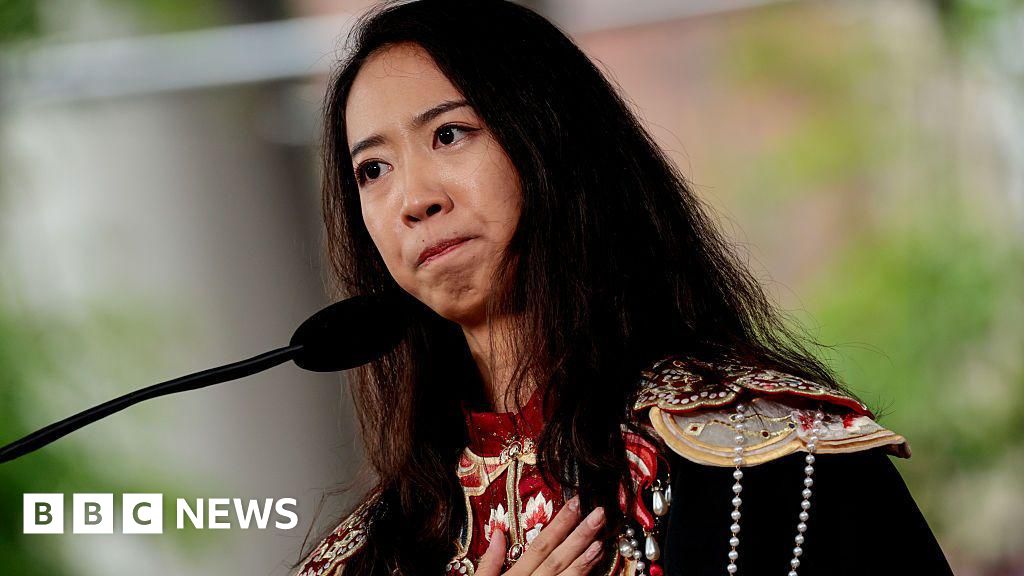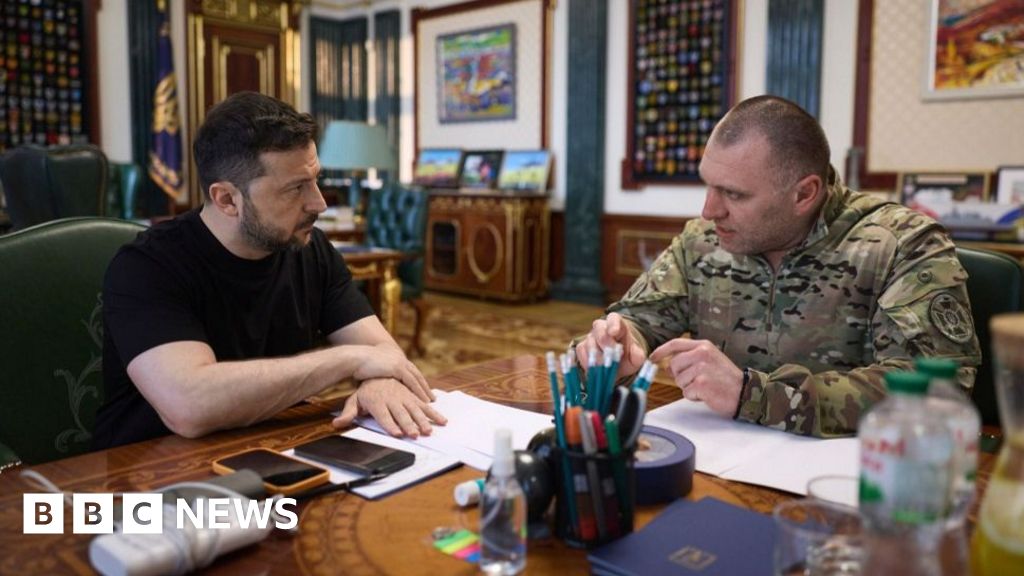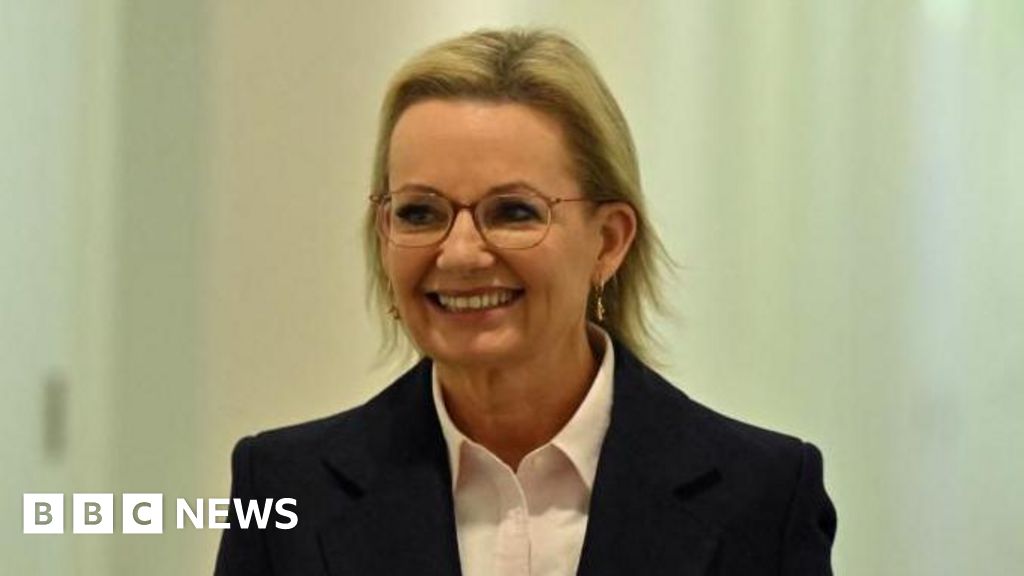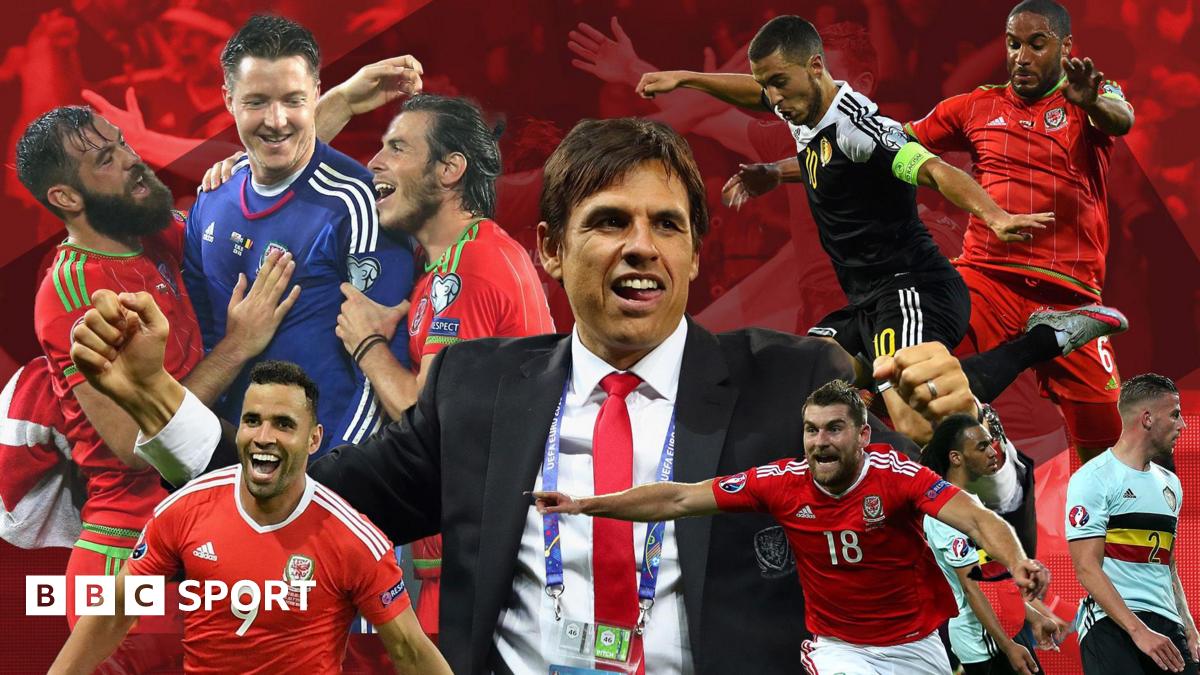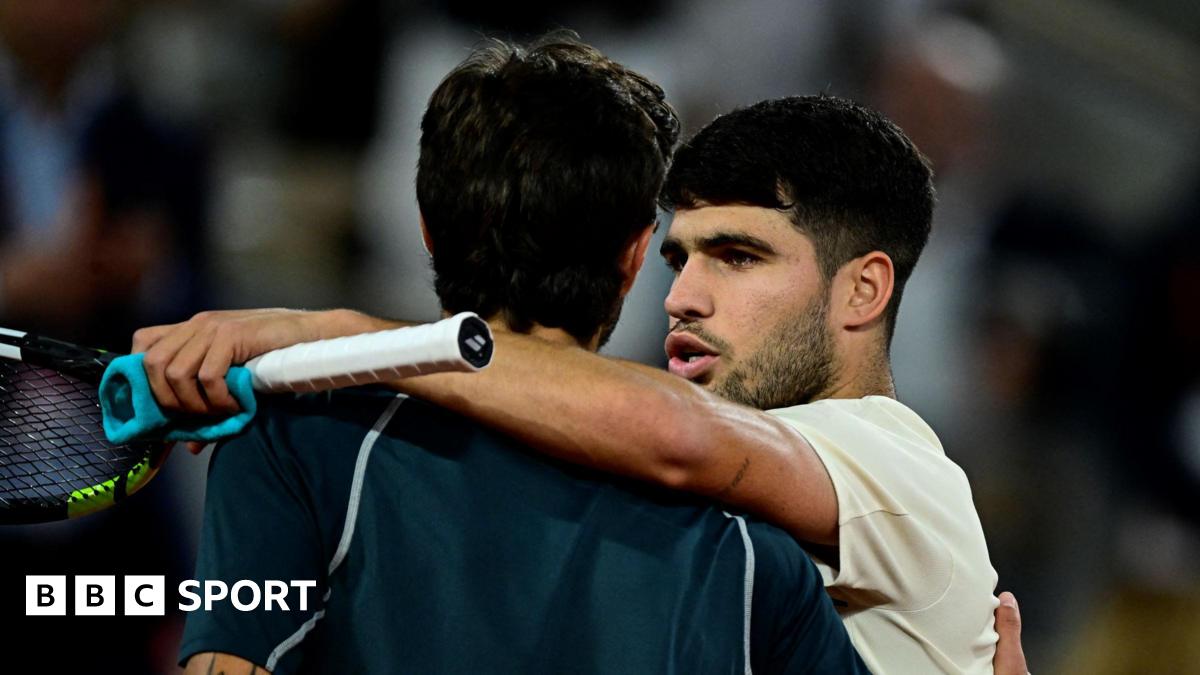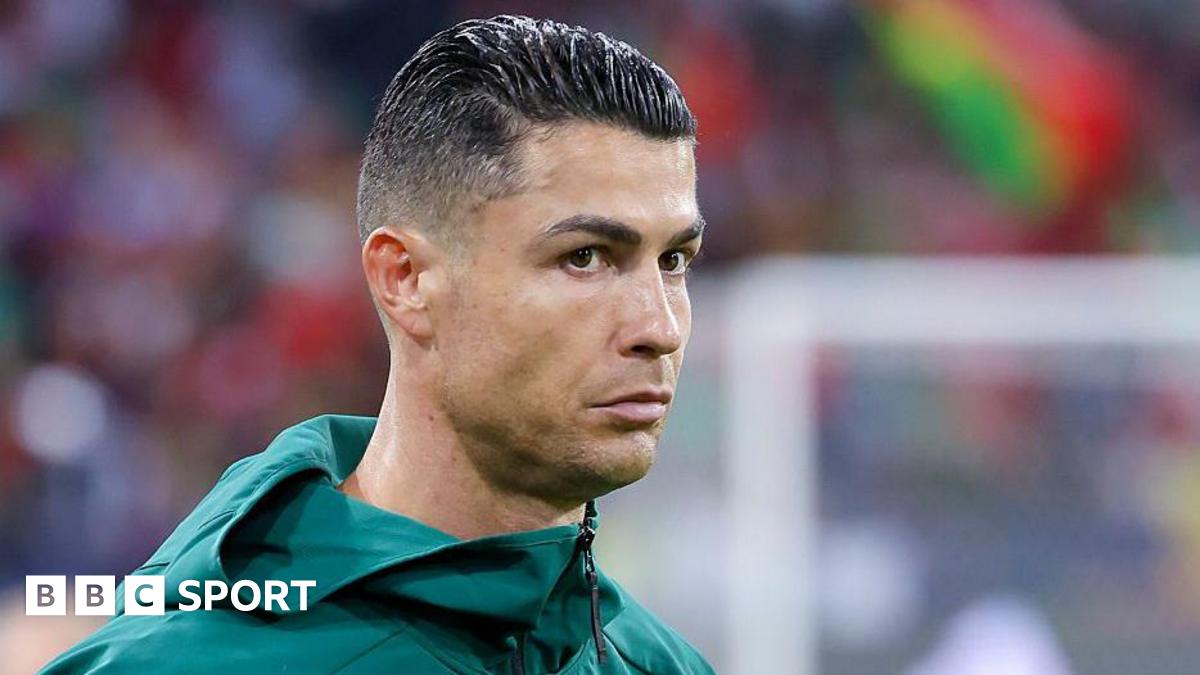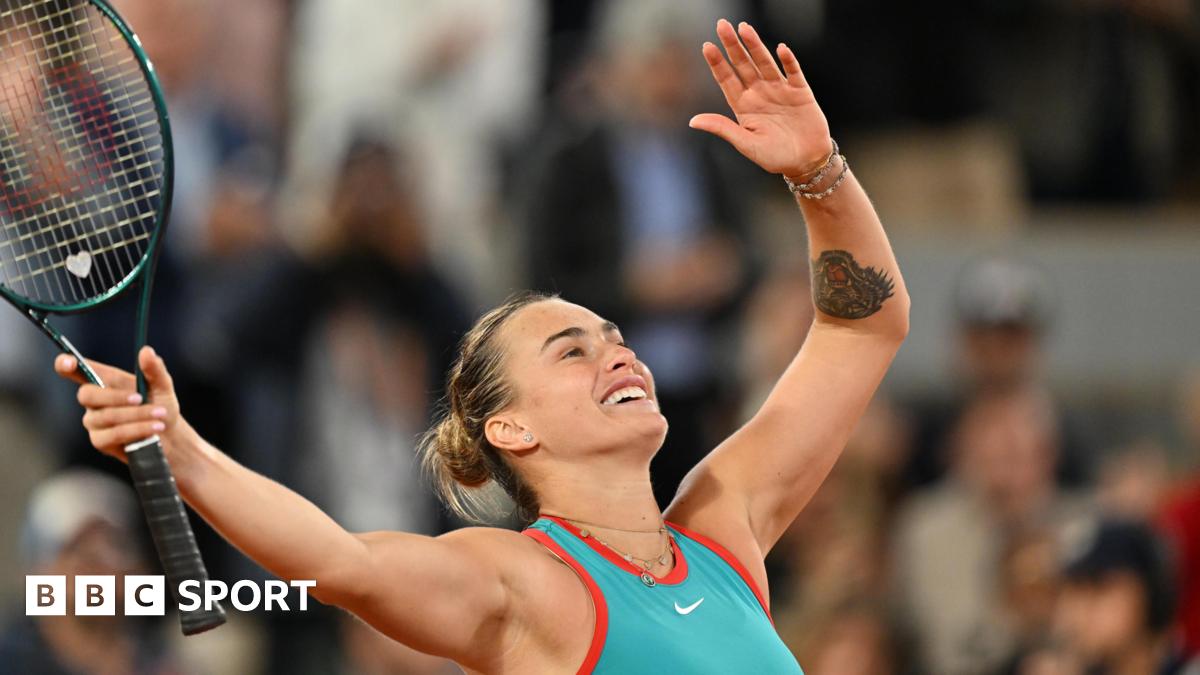
Bill ConnellyMay 24, 2025, 01:00 PM ET
- Bill Connelly is a writer for ESPN. He covers college football, soccer and tennis. He has been at ESPN since 2019.
Every iteration of the Premier League has included Arsenal, Everton, Liverpool, Manchester United, Tottenham Hotspur and Chelsea. Manchester City, last promoted in 2002, bought its way into the club as well. Granted, Everton has decided to start flirting with disaster in recent years, but we've been able to count on 35% of the league's roster to remain stable. The other 65%, however, is awash in yo-yo teams and unpredictable rise-and-fall stories.
Well, they used to be unpredictable stories, anyway. For the last couple of seasons, the answer to "Who's getting relegated?" has simply been, "Who just got promoted?" The last six teams that have come up to the Premier League have immediately gone back down. And it hasn't even been particularly close: These six teams have averaged just 20.8 points in league play, and this year's batch all clinched relegation in April. This season, Southampton has produced the second-worst point total in Premier League history, ahead of only 2007-08 Derby County.
The stratification has expanded to the second division as well: Among these six straight-back-down teams were a Burnley squad that had just averaged 2.20 points per game in the second-tier Championship (the fourth-best average of the last 20 years), a Leicester City team that had averaged 2.11 points per game (10th-best) and an Ipswich Town team that had averaged 2.09 (11th-best). Among this year's promoted teams are Leeds United and Burnley squads that produced similarly awesome averages. But will that even slightly matter? Has the jump to the Premier League become too tenuous to land it safely?
Things are accelerating quickly, but there might still be lessons to learn from the teams that pulled it off. In the last decade, eight clubs have made the jump to the top flight and remain there. What lessons can we learn about how they did it? What might it take for one of this year's promoted teams -- Championship winners, Leeds United, Burnley and Saturday's playoff final winners Sunderland -- to actually stay in the Premier League?
Survival stories
Brighton & Hove Albion
Promotion year: 2017
Consecutive years in the Premier League: 8
Respective finishes: 15th, 17th, 15th, 16th, 9th, 6th, 11th, 8th (to date)
For quite a few teams in this sample, we see a period of pure survival followed by a period of growth. In Brighton's first four seasons of this eight-year run, they averaged just 1.04 points per game and 0.97 goals per game. But they've risen to become a genuine midtable force in the last four seasons, averaging 1.45 points and 1.53 goals since 2021-22.
Brighton were excellent all-around in their promotion year, ranking first in goals allowed and second in goal differential. They took both far more shots and far better shots than their opponents, and while their possession numbers were solid like a dominant team's usually are, they were the best counter-attacking team in the league too. They were disruptive against buildup play, and they had an excellent backbone with center-backs Lewis Dunk and Shane Duffy. And they brought to the Premier League a roster full of players approaching their respective athletic prime.
Brighton have since become known for developing strong young talent and making huge money off of player transfers Moisés Caicedo (€116 million), Marc Cucurella (€65.3 million), Ben White (€58.5 million), Alexis Mac Allister (€42 million), et cetera. But their strength early on was simply finding decent players approaching their prime and assuring they had a sturdy defensive base.
Newcastle United
Promotion year: 2017
Consecutive years in the Premier League: 8
Respective finishes: 10th, 13th, 13th, 12th, 11th, 4th, 7th, 4th (to date)
It's amazing what money can do. While Newcastle have enjoyed a similar "survive, then thrive" theme during their time back in the Premier League, they certainly got a boost when Saudi Arabia's Public Investment Fund (PIF) became their majority owner in October 2021. They had won only one of their first 18 league matches in 2021-22 and were mired in the relegation zone at the start of 2022, but a vigorous round of January spending resulted in a second-half surge and an 11th-place finish.
The Premier League's Profit and Sustainability Rules (PSR) have prevented Newcastle from going particularly wild in the spending department, but the effects of their spending have still been obvious: From the start of 2017-18 through mid-January 2022, Newcastle averaged just 1.1 points per game. Since PIF began writing transfer checks, however, they've averaged 1.8 points per game. They are potentially positioned for their second UEFA Champions League berth in three seasons heading into the final matchday of 2024-25; before that, they hadn't played in the competition since 2003.
It doesn't feel like "find one of the richest benefactors in the world (and simply ignore the potential fallout from doing so)" should be a particularly useful lesson ... but in the Premier League, it might actually be just that?
Wolverhampton Wanderers
Promotion year: 2018
Consecutive years in the Premier League: 7
Respective finishes: 7th, 7th, 13th, 10th, 13th, 14th, 14th (to date)
Between 2003 and 2018, Wolves were promoted four times and relegated three times, including once down to the third division. But by 2017, they had put together a brilliant collection of young talent -- winger Diogo Jota, midfielder Rúben Neves, even 17-year-old forward Morgan Gibbs-White. Combined with a solid base of veterans, they finished first in both goals scored and goals allowed in 2017-18, proving capable of either slow buildup play or the swift counter-attacks that then-manager Nuno Espirito Santo has long enjoyed.
In the Premier League, the possession play quickly withered, but the defense and dangerous counter-attacking remained. No one generated more xG from counters or allowed less in 2018-19, and they rode this approach to back-to-back seventh-place finishes and a run to the 2019-20 UEFA Europa League quarterfinals.
The going has been trickier since, as richer clubs have come for both their talent and, in one case, their manager (Nuno left for Tottenham Hotspur in 2021). This will be their fifth consecutive season with a negative goal differential and a ranking in the double-digits. But a deep connection to Portuguese super-agent Jorge Mendes has kept the (often Portuguese) talent flowing toward the club, and despite a number of managerial changes, they have retained a similar style -- solid counters, a possession rate between 46%-50%, a safe but passive defensive approach -- and remained consistently above the relegation line.
1:43
Nicol: Southampton's squad was never good enough for the Premier League
Steve Nicol reacts to Southampton's Premier League relegation after their 3-1 loss vs. Tottenham.
Aston Villa
Promotion year: 2019
Consecutive years in the Premier League: 6
Respective finishes: 17th, 11th, 14th, 7th, 4th, 6th (to date)
Aston Villa haven't benefited from a PIF-like money infusion, but owner V Sports has certainly used its checkbook. Since their 2019 promotion, Villa have spent an average of €138.2 million per season in transfer fees, and while that has threatened to put them in PSR jail, it's also put them in position for a second-straight Champions League bid.
Others have tried the "spend a ton and hold on for dear life" approach with less success, but it certainly worked for Villa: Tyrone Mings and Ezri Konsa were among the 2019-20 arrivals; Ollie Watkins, Emiliano Martínez and Matty Cash in 2020-21; Leon Bailey and Lucas Digne in 2021-22; Morgan Rogers, Youri Tielemans and Pau Torres in 2023-24; and Amadou Onana and Ian Maatsen (plus Marcus Rashford and Marco Asensio on loan) in 2024-25. "Spend money well" is a key part to any success story, and Villa have done some good business. Their reward: eventual top-half-of-the-table status.
First 3 seasons in the Premier League: 1.18 points per game, 1.30 goals, 1.46 goals allowed
Last 3 seasons: 1.73 points per game, 1.64 goals, 1.38 goals allowed
Champions League play was hard to envision as they were averaging a 14th-place finish from 2019-20 to 2021-22, but here we are.
Brentford
Promotion year: 2021
Consecutive years in the Premier League: 4
Respective finishes: 13th, 9th, 16th, 9th (to date)
The Bees didn't see first-division ball from 1947 to 2021, but they'll play their fifth consecutive season in the Premier League next year. While they've slowly ramped up their transfer spending each year, they're still near the bottom of the league in that regard. But one of the most analytics-friendly clubs in England has made up ground by simply knowing exactly what they are, identifying talent well and playing an intensely unique style of ball -- sacrificing shot quantity for quality, endlessly attempting 1-vs.-1s, keeping the possession count high, dominating on set pieces and just being willing to try stuff.
They've also been able to hold onto Thomas Frank, a perfect manager for what they want to do. And with each passing year, they appear more willing to take risks and keep games wide open in the increasingly low-tempo Premier League.
First 2 seasons in the Premier League: 1.39 goals per game, 1.34 goals allowed
Last 2 seasons: 1.61 goals per game, 1.61 goals allowed
It will be interesting to see how Brentford approach trying to move further up the table -- ninth place is an incredible accomplishment, but clubs tend to eventually aim higher than that (and sometimes overextend themselves in the process). But for a club with a lower-division budget, the stability they've achieved of late is remarkable.
Bournemouth
Promotion year: 2022
Consecutive years in the Premier League: 3
Respective finishes: 15th, 12th, 11th (to date)
After a brief Premier League stint in the mid-2010s (their first ever), the Cherries moved up for good (for now) in 2022. First they were lucky, and now they're good.
Like others on this list, Bournemouth were defensively excellent in the Championship, but they took an aggressive and athletic approach that doesn't always translate with an upgrade in competition: They allowed the fewest passes per defensive action (PPDA) and progressive carries, drew the second-most offsides and forced the third-most high turnovers. The transition to the Premier League didn't go particularly well either -- they were 20th in the league in xG differential and 19th in goal differential but took just enough points from close games to survive by five points. They took advantage of the good fortune, bringing manager Andoni Iraola from Rayo Vallecano, and making outstanding young-player acquisitions for three straight years: Antoine Semenyo, Dango Ouattara and Illia Zabarnyi in 2022-23; Justin Kluivert and Milos Kerkez in 2023-24; Evanilson and Dean Huijsen in 2024-25.
Iraola Ball is unique, combining urgent attacking and the fastest tempo in the league with conservative defense that always keeps lots of players behind the ball. But moving forward, they'll have to deal with one of the downsides of success: poachers. Huijsen is on his way to Real Madrid, Kerkez and others might leave as well, and Iraola is consistently on big-club managerial candidates lists.
1:22
Echegaray: Leicester didn't improve under Van Nistelrooy
Luis Miguel Echegaray believes Leicester were wrong to replace Steve Cooper with Ruud Van Nistelrooy, following confirmation of their Premier League relegation.
Fulham
Promotion year: 2022
Consecutive years in the Premier League: 3
Respective finishes: 10th, 13th, 10th (to date)
Up in 2018, down in 2019, up in 2020, down in 2021. Fulham were the patented yo-yo club for a few years, but with help from recent years of Premier League money, they got their infrastructure in place and finished first in the Championship in 2021-22. The attack was incredible, finishing a distant first in goals (2.3 per match) and first in expected goals (xG) with 2.1. Perhaps most interestingly, they were first in both buildup attacks -- open-play sequences that contain at least 10 passes and either end in a shot or produce a touch in the opponent's box -- and in xG created from counterattacks. They could attack you with either patience or urgency.
The main pieces of this amazing attack were Aleksandar Mitrovic (50 combined goals and assists in 2021-22), Harry Wilson (29), Fabio Carvalho (18), Bobby De Cordova-Reid (15) and Neeskens Kebano (15). None of them are still with the club, but manager Marco Silva is. He took over in the promotion season, and he leads a team that simply leans into what it's good at. With Antonee Robinson, Adama Traoré and Alex Iwobi, that's counters and relentless duels; with forward Raúl Jiménez, that's headers in the box. They don't quite have the identity that some of the others on this list possess, but they've been good enough to comfortably avoid the drop.
Nottingham Forest
Promotion year: 2022
Consecutive years in the Premier League: 3
Respective finishes: 16th, 17th, 7th (to date)
Forest are the ultimate "survive, then thrive" team. They haven't really created a model you'd feel comfortable following -- signing 45 players (including loanees) in their first two seasons, dealing with a points deduction from the financial rules they stretched while doing it, and living most of two seasons under relegation threat before finding their footing. But after two chaotic seasons, they found in 2024-25 that they had a manager with a very specific identity (former Wolves man Nuno) and the personnel to perfectly execute said counterattacking identity.
Goalkeeper Matz Sels and center-backs Murillo and Nikola Milenkovic, acquired over two seasons for a combined €32.3 million, have given Forest an excellent defensive spine, and the speedy trio of Gibbs-White (once of Wolves), Anthony Elanga and Callum Hudson-Odoi, orbiting around big man Chris Wood, has made them frequently devastating on the break. They overachieved their xG numbers for much of 2024-25 and have come back to earth lately, but they're still guaranteed a top seven finish and have a slight chance at a Champions League berth heading into the final day. The end-product -- sturdy defense acquired cheaply, speedy castoffs powering a unique attack - seems like something other promoted teams could strive for, even if there was a lot of drama getting to this place.
0:45
How Ipswich's relegation made Premier League history
Take a look at the statistics behind Ipswich's relegation from the Premier League.
What this means for the latest promoted teams
If we're being honest, there aren't any surefire similarities among the eight clubs above. It certainly seems like building a sturdy and reliable defense (one more likely to rely on soaking up pressure than delivering it) is cheaper than building a dynamic attack, and hey, if you can find yourself an owner willing to spend hundreds of millions of pounds in transfer fees, year after year, and test PSR, then go for it. But plenty of recently relegated teams have also attempted to spend loads of money, and plenty thought they had sturdy defensive personnel.
Still, let's take a look at this year's three promoted teams to see how they've been built and who might have the most sustainability potential.
Leeds' main solution to Premier League relegation in 2023 was to simply keep acting like a Premier League team for as long as possible. They kept quite a bit of their 2023 roster core intact and will therefore bounce back up to the top division with quite a few players you recognize: Goalkeeper Illan Meslier, center-back Pascal Struijk, fullback Junior Firpo, attacking midfielders Brenden Aaronson, Daniel James and Wilfried Gnonto, and forward Mateo Joseph all played major roles on this year's team, and even former star forward Patrick Bamford is still kicking around in a minor role.
The club's spending efforts were rewarded this season, as Leeds were far and away the best team in the second division. Though they tied with Burnley with 100 points -- the second-highest Championship point total in the last 10 years -- Leeds easily had the best underlying numbers: They scored 24 more goals than anyone else, allowed the second-fewest (behind only Burnley) and produced both the best Championship goal differential and xG differential of the last five years.
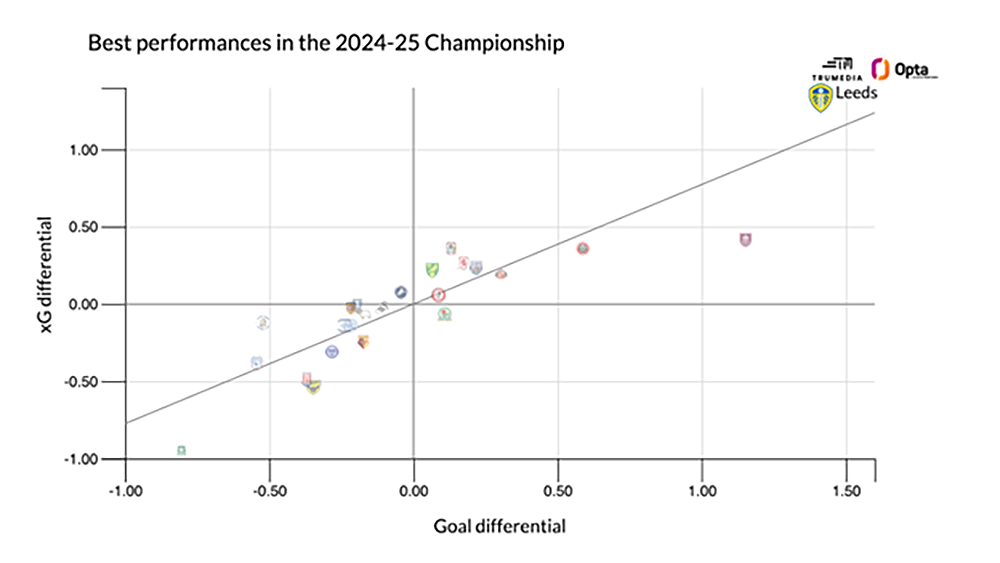
(Source: TruMedia)
Two potential problems, however: First, Burnley produced an even higher point total in 2022-23 (101 points), and none of that even slightly correlated with Premier League success: They finished 19th in 2023-24 and went straight back down. Second, spending like a top-division team when you're in the second tier brings some pretty big debt concerns with it. They lost over £60 million in their first year back down, one in which the team collapsed late and let promotion slip between their fingers. The figures should be similar for this season, and while they've sold extra shares in the club as a way of raising money, they will still likely have to make some player sales to avoid penalties. They'll have options in that regard -- there are currently 12 players with a Transfermarkt value of at least €16 million, and Leeds have half of them (Meslier, Struijk, James, Gnonto, defender Ethan Ampadu and forward Joël Piroe) -- but keeping your roster core together only to watch it disintegrate a bit when you go back up isn't optimal.
One more potential concern: It's hard to replicate a dominant possession-and-pressing style once you've been promoted -- just ask 2023-24 Burnley -- and what was Leeds particularly good at this season? Possession and pressing: They were first in possession rate (61.2%), first in passes per possession (7.2), first in progressive passes (61.7) and first in progressive carries (75.9). Meanwhile, in the department of defensive pressure, they were first in progressive passes (28.4) and carries (39.7) allowed and second in PPDA (10.4). They used speed and athleticism to their extreme benefit in the Championship, and while that's a delightful and entertaining style to bring to the table, they won't be able to rely on athleticism advantages in the Premier League.
Survival will require a level of adaptation that Leeds couldn't pull off two years ago. After developing a delightfully manic style under first Marcelo Bielsa and then Jesse Marsch, they panicked when faced with relegation in 2022-23, replacing Marsch with the more conservative Javi Gracia; when that didn't work, they panic-fired Gracia and replaced him with ultra-conservative Sam Allardyce for four matches. He secured one point, and Leeds went down quietly. Daniel Farke has since re-established Leeds' aggressive mentality, but we'll see if and where he chooses to get more conservative back in the top division.
1:23
Why Wrexham's rapid rise would hit a wall in the Championship
Mark Ogden explains why Wrexham would find it difficult to take the next step to the Premier League, if they were to achieve League One promotion this season.
Burnley hope to pull a Fulham. This is their fourth-straight season either getting promoted or relegated, and the goal will be to stop the yo-yo effect in 2025-26.
After a sturdy run of six consecutive Premier League seasons under the conservative Sean Dyche from 2016-17 to 2021-22, they got relegated and attempted to modernize. Vincent Kompany led them to one of the best-ever second-division campaigns in 2022-23, but none of his possession tricks translated without requisite talent advantages back in the Premier League, and they looked almost naïve in attempting them. (Surprisingly, Kompany ended up getting hired by Bayern Munich after leading Burnley through a feckless relegation campaign. Perhaps not surprisingly, his tricks started working again with Bayern's talent.)
Under veteran Scott Parker this season, Burnley re-introduced more sturdy defensive work into the equation. Parker employs safe, steady possession as almost a defense mechanism, and it works really well in the second division: Burnley ranked fourth in the league in possession rate (56.6%) and fourth in passes per possession (6.4), and it mainly served to keep opponents far from their goal. They minimized opposing counter-attacks, gave opponents neither shot quantity (second in shots allowed per possession) nor shot quality (second in xG allowed per shot) and watched goalkeeper James Trafford pull off absolute magic all season. He ranked first in the league with an 81.5% save percentage and kept clean sheets in 29 of 45 starts (making Burnley shareholder J.J. Watt sweat in the process). There was undoubtedly some good fortune involved here -- opponents attempted shots worth 0.86 xG per match but scored only 0.35 actual goals per match, and even the best goalkeeper in the world isn't going to create that large a difference between the two every season.
They were also unsustainably fortunate in attack: Burnley ranked only 19th in xG per shot, and midfielder Josh Brownhill and forward Zian Flemming combined to score 30 goals from shots worth only 19.0 xG. Not even Lionel Messi overachieves his xG figures by 58%. Brownhill had scored a total of 13 goals in five previous seasons with Burnley before knocking in 18 this season.
Still, while their final numbers were likely better than they should have been, there was some undeniable quality here. If defensive solidity is the main source of Premier League survival, Burnley's ability to keep defenders behind the ball and keep opponents out of the box while still playing with a relatively high defensive line (they were first in the league in offsides drawn) suggests both quality structure and personnel. Center-back Maxime Estève, 22, was one of the best players in the league this season; if they can hold onto him for 2025-26 and Trafford doesn't regress too far toward the mean, they could produce solid defensive numbers even if they can't possibly expect to score much.
Hiring Parker last year was extremely logical on Burnley's part -- they're the third team he's gotten promoted to the Premier League (after Fulham and Bournemouth) in just the last six seasons. The downside, however, is that his approach really hasn't worked in the top division. His Fulham were immediately relegated, and his Bournemouth stint ended after a disastrous start in the Premier League. His teams don't score much in the top division, and his defenses haven't held up. Maybe both he and Burnley have learned from recent failures?
I'm not going to lie: It's hard to see Sunderland staying up. Mind you, it's incredible that they're back. The subjects of a popular documentary series ("Sunderland 'Til I Die") that was basically premised around what it's like to love a club that has no idea what it's doing, Sunderland suffered back-to-back relegations in 2017 and 2018 and spent four years in the third division before finding their footing. After finishing 16th in the Championship last year, they bounced up to fourth this term. Despite losing their last five matches of the regular season, they beat Coventry City with a late goal in the promotion playoff semifinal, then beat Sheffield United in stoppage time in Saturday's playoff final at Wembley. Teenager Tom Watson's seeing-eye goal will be remembered for quite a while, even though Watson himself is already bound for Brighton this summer. (Their other excellent teenager, midfielder Jobe Bellingham, is also potentially leaving, likely for a Bundesliga club like Borussia Dortmund, RB Leipzig or Eintracht Frankfurt.)
On paper, Sunderland weren't nearly as strong as either Leeds or Burnley this season. Their attack was above average at best: ninth in goals (1.26 per game), eighth in xG (1.30), 11th in shots per possession, eighth in xG per shot. They hunted for good shots and kept the ball on the ground, but they just actually find all that many great opportunities. They had 35% of their shots blocked (second-most). Even including the playoff, only two Sunderland players, 24-year-old Wilson Isidor and 20-year old Eliezer Mayenda (whose 76th-minute goal against Sheffield United set up Watson for the winner), scored more than five goals.
That said, we've learned that quality defense is more likely to translate in the Premier League than quality offense, and Sunderland were better on that side. They allowed only a goal per match (fourth) and forced opponents to take 83% of their shots with at least two defenders between ball and goal (fifth). And while the attack wasn't phenomenal overall, they utilized exciting and aggressive youngsters and strong ball progression -- first in ground duels won, first in take-ons, third in progressive passes, fourth in progressive carries -- to counter-attack quite well.
It will be tricky to balance the maintenance and development of a young roster core - even if Bellingham leaves, they'll still likely have most of Isidor, Mayenda, fullbacks Trai Hume (23) and Dennis Cirkin (23), defensive midfielder and captain Dan Neil (23) and attacking midfielder Chris Rigg (17) -- with both circling vultures and the demands of the Premier League. But Sunderland built this core through a busy run of roster moves, and while this is probably meant to be a yo-yo year, manager Regis Le Bris did a phenomenal job, and the bright youngsters and decent defense will allow Sunderland fans to find hope this summer.































